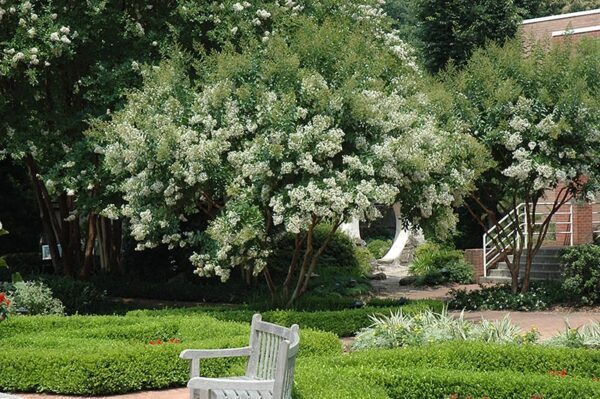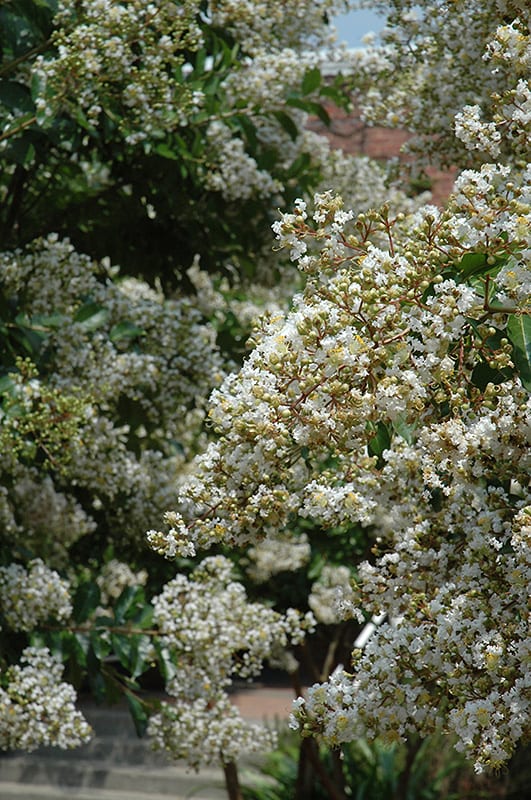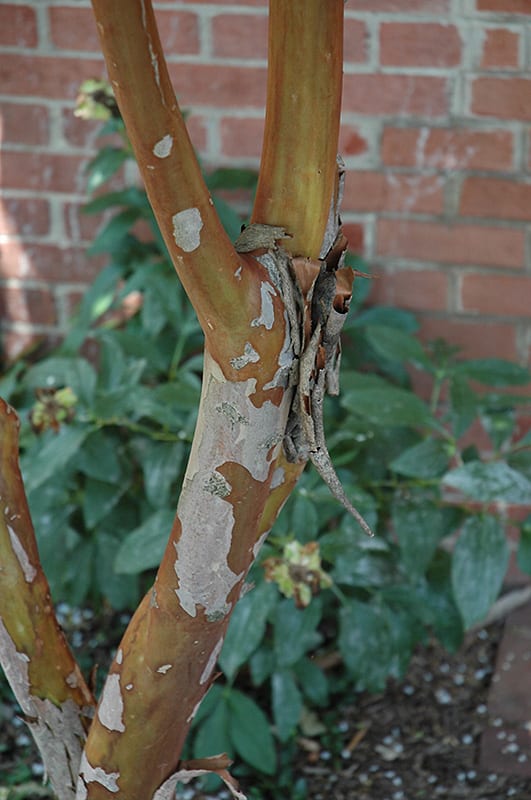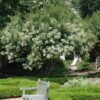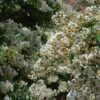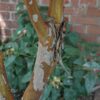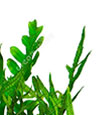Natchez Crapemyrtle
An ornamental tree that is covered with papery panicles of white flowers on weeping branch tips; decorative bark exfoliates to expose layers of color; shows good resistance to powdery mildew; heat and drought tolerance; does not like to be over-fertilized.
Please contact your local store for product availability.
Find a garden center near you.
Other Species Names: Crapemyrtle, Crepemyrtle
Plant Height: 300 in.
Spread: 240 in.
Evergreen: No
Plant Form: arching
Emergent Foliage Color: copper
Summer Foliage Color: dark green
Minimum Sunlight: partial shade
Maximum Sunlight: full sun
Natchez Crapemyrtle is bathed in stunning panicles of white frilly flowers at the ends of the branches from early to late summer. It has attractive dark green foliage which emerges coppery-bronze in spring. The oval leaves are highly ornamental and turn orange in fall. The fruit is not ornamentally significant. The peeling brown bark is extremely showy and adds significant winter interest.
Natchez Crapemyrtle is a dense multi-stemmed deciduous tree with a shapely form and gracefully arching branches. Its average texture blends into the landscape, but can be balanced by one or two finer or coarser trees or shrubs for an effective composition.This is a relatively low maintenance tree, and is best pruned in late winter once the threat of extreme cold has passed. Deer don't particularly care for this plant and will usually leave it alone in favor of tastier treats. It has no significant negative characteristics.Natchez Crapemyrtle is recommended for the following landscape applications;AccentMass PlantingHedges/ScreeningGeneral Garden Use
Natchez Crapemyrtle will grow to be about 25 feet tall at maturity, with a spread of 20 feet. It has a low canopy with a typical clearance of 4 feet from the ground, and is suitable for planting under power lines. It grows at a fast rate, and under ideal conditions can be expected to live for 40 years or more.This tree does best in full sun to partial shade. It prefers to grow in average to moist conditions, and shouldn't be allowed to dry out. It is very fussy about its soil conditions and must have rich, acidic soils to ensure success, and is subject to chlorosis (yellowing) of the leaves in alkaline soils. It is highly tolerant of urban pollution and will even thrive in inner city environments. This particular variety is an interspecific hybrid.

